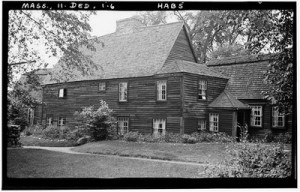Just as the greenest car is not the one with the most energy-conserving gadgets but the one that is on the road the least, the greenest building is not the one with grass on the roof or a rainwater reservoir in the basement, but the one that lasts the longest. So large is the amount of embodied energy in a building, that the best way to get the most out of it is for the building to remain in use a long, long time. By that measure, the greenest house is the U.S. is the Jonathan Fairbanks house in Dedham, Mass., (below) built in 1636, though now a museum rather than a residence. The problem with building for the ages is that the useful life of contemporary building is remarkably short—and getting shorter. Annual improvements in building technology and changes in building standards—not the least LEED—render large parts of buildings obsolete after a bare few decades. Not only mechanical, electrical and communication systems, but also insulation, glazing, entire façades, require replacement. Office buildings from the 1960s and 1970s are regularly re-skinned, partly due to changing fashion, and partly to the desire for increased performance. It is true that the basic structure, the columns and beams, may be preserved, but these represent a tiny part of the entire building fabric. If we are serious about green building we are going to have to rethink the way that buildings are built, and re-built, over their (hopefully increasingly long) lives.

On Culture and Architecture
